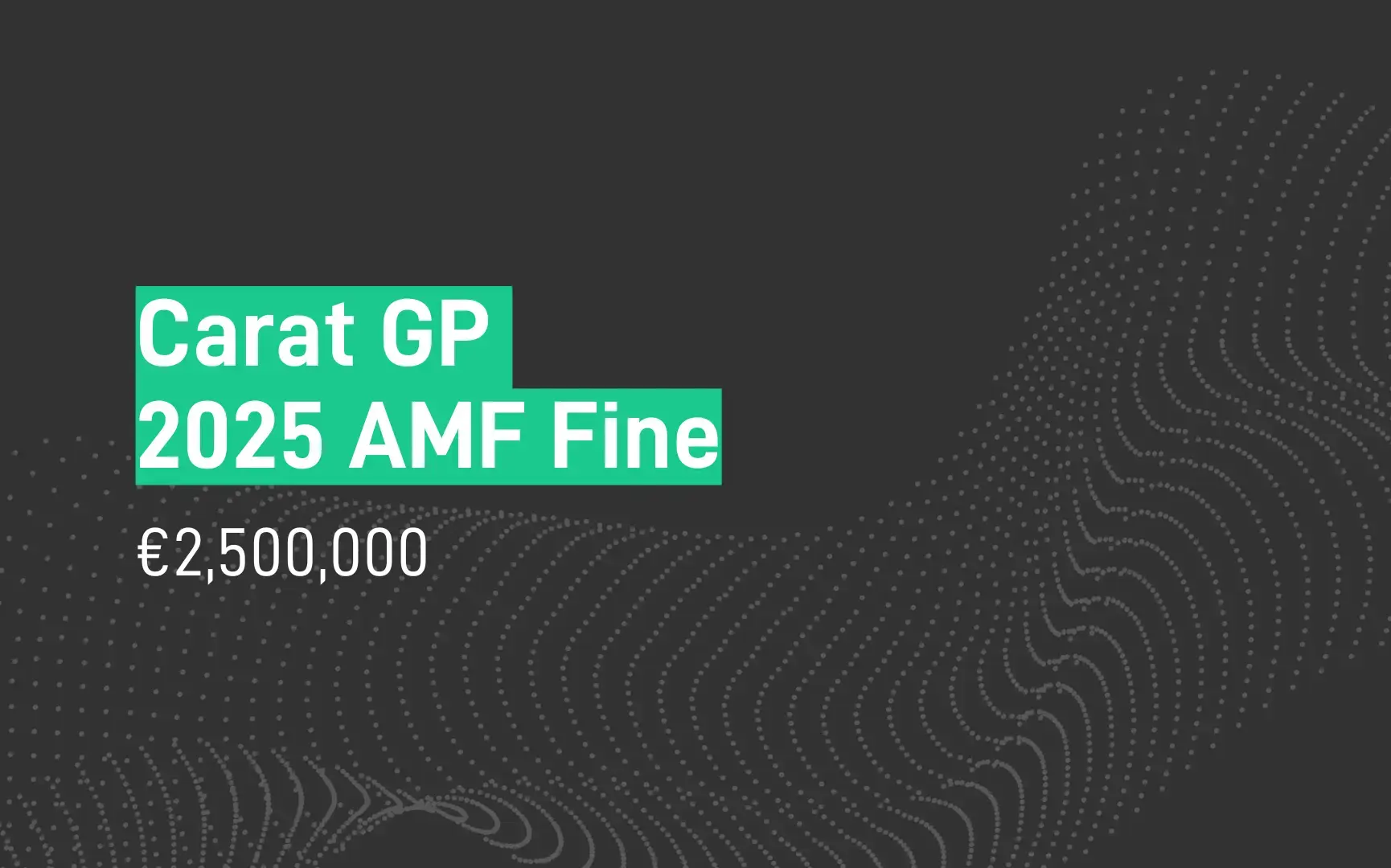Modern collaboration platforms like Slack, Zulip, Microsoft Teams, and Telegram offer unprecedented speed, convenience, and collaborative potential, streamlining workflows and enhancing engagement. However, beneath this surface of efficiency lies a complex and growing web of compliance risks.
Features such as message editing and deletion, ephemeral or disappearing messages, voice notes, expressive reactions, and replies to content that may have been subsequently altered or removed create significant considerations for regulated firms. These capabilities, designed for user convenience, can inadvertently undermine critical compliance functions like record keeping, surveillance effectiveness, and the maintenance of complete, immutable audit trails.
This blog dissects the specific compliance threats posed by the newer functionalities embedded within modern chat platforms.
It explores the expectations set forth by key regulators and outlines crucial mitigation strategies that encompass policy development, employee training, and the indispensable role of technology. We’ll provide actionable guidance for compliance teams on how to identify these features in their environment, monitor and control them, work with vendors and platforms to ensure capture, educate end users, and build controls that satisfy global regulators.
Prefer to listen? Take this blog on the go with our AI-generated podcast by listening here.
Contents
The Proliferation of Chat Platforms & Their Compliance Challenges

Each platform comes with its own set of features and quirks. Modern chat apps are not just text exchanges; they enable editing past messages, deleting or recalling messages, setting chats to auto-erase, sending audio clips, sharing images and GIFs, and replying in threaded conversations. These innovations make chats more dynamic and interactive for users. But for compliance professionals tasked with chat monitoring, they introduce significant compliance risks. A message that can change or vanish after being sent is a far cry from an email locked on a server.
Below, we list and describe some of the most challenging chat features that complicate surveillance and record keeping oversight.
-
Users can easily share images and videos within chat platforms, and sometimes edit them. Video conferencing tools like Teams and Zoom involve screen sharing, virtual whiteboards, and file sharing during meetings.
-
Risk: Edited images or videos can obscure original information or create misleading records, compromising data integrity. More significantly, visual content shared during chats or meetings (screenshots, documents displayed on screen, whiteboard notes) can inadvertently expose sensitive data like Material Non-Public Information (MNPI), Personally Identifiable Information (PII), or Payment Card Information (PCI).
-
Example Scenario: A head of desk shares an image of a sensitive spreadsheet via Slack to demonstrate trades and performance. Later, they realise the spreadsheet included rows that exceeded risk limits, something they should have reported. They quietly replace the original image (in chat) with an edited version to remove evidence of those breaches.
Ephemeral & Disappearing Messages
-
Offered by platforms such as WhatsApp, Telegram, and Signal, this feature automatically deletes messages after a predefined period, ranging from seconds to days.
-
Risk: The use of ephemeral messaging for business communications constitutes a direct violation of record keeping mandates like SEC Rule 17a-4 and MiFID II, which require long-term preservation of business records. It creates unavoidable gaps in communication logs, severely hindering supervisory oversight and the ability of regulators to investigate potential wrongdoing.
-
Example Scenario: A salesperson at a brokerage uses WhatsApp’s disappearing messages to confirm trades with clients outside official channels. When a dispute arises about trade terms, the firm has no record of the conversation since all messages automatically vanished.

Message Editing & Deletion
-
Platforms like Slack and Microsoft Teams empower users to modify or erase messages after they have been sent, potentially altering the conversation's official record. Slack, for instance, provides administrators on paid plans with granular controls over editing permissions, including time limits, and offers retention settings that can be configured to track these revisions. Similarly, Microsoft Teams allows edits and deletions, with retention policies potentially capturing original versions if properly configured and applied.
-
Risk: This functionality directly undermines the integrity of record keeping obligations. It creates opportunities for individuals to conceal misconduct, errors, or sensitive information, significantly complicating eDiscovery processes and internal or regulatory investigations. Critically, deleted messages may be permanently unrecoverable by default on some platforms if not proactively captured by a dedicated solution.
-
Example Scenario: An employee initially sends a direct message on Microsoft Teams sharing non-public information about an upcoming merger to a colleague, hinting at a potential stock purchase. Realising the risk, they edit the original message to remove the incriminating detail, perhaps only seconds later.
Replies to Modified/Deleted Content
-
Features like threaded replies, common in Slack and Teams, allow users to respond directly to specific earlier messages.
-
Risk: If the original message being replied to is subsequently edited or deleted, the reply can become orphaned or its context fundamentally altered. This breaks the conversational audit trail, making it difficult to understand the true flow and meaning of the interaction. Effective compliance requires capturing the relationship between replies and the original state of the message being referenced, including preserving the history of edits and deletions.
-
Example Scenario: A group of analysts in Slack are discussing a high-profile client’s confidential expansion plans. One analyst replies in-thread to a message that explicitly mentions the confidential company name and location. The original message is later deleted out of caution, leaving the reply referencing “great opportunity” with no context.
Voice Notes & Calls
-
Platforms like WhatsApp, Teams, and Slack facilitate voice notes and direct voice calls, offering richer, more nuanced communication than text alone.
-
Risk: You must ensure that any voice is processed just like regular voice communication, i.e., that they are transcribed accurately, and archived in a compliant, searchable format. In the absence of any voice specific processing, the contents of the note are effectively hidden to the compliance team.
-
Example Scenario: A manager uses voice notes on WhatsApp to discuss higher-than-allowed commission structures with a junior broker. This conversation, although vital to an investigation, is never transcribed or logged.
While improving user experience these features undermine the traditional compliance controls if left unchecked. They create gaps where communications can be altered, removed, or hidden from oversight. In a regulatory context where complete and tamper-proof records are expected, such gaps are unacceptable. Let’s delve into why regulators care so much about these issues and what standards financial firms are expected to uphold.
Why These Features Matter

To name a few:
The very definition of a "complete record" has expanded. Regulators and legal processes increasingly demand more than just the textual content of a message. They expect the full context: who sent it, when, to whom, associated metadata, surrounding messages in a thread, any subsequent edits or deletions, and even the content of files shared or screens displayed during video calls.
Foundational regulations like SEC Rule 17a-4, MiFID II record keeping requirements, and various FINRA rules mandate the preservation of business-related electronic communications, often for several years, in a format that is complete, unaltered, and easily accessible. Ephemeral messaging functions directly contradict these mandates by design, ensuring messages disappear. Message deletion permanently removes records unless a specific capture mechanism is actively preserving them. Message edits, if not meticulously tracked, result in preserved records that do not reflect the original communication. Rich media formats like voice, video, and complex chat elements require specialised archiving capabilities beyond simple text storage.
Furthermore, the nature of the risk itself is shifting. While accidental non-compliance or policy ignorance certainly plays a role, the availability of features like end-to-end encryption, easy deletion or editing, and ephemeral messaging provides tools that can be used with intent to bypass monitoring and record keeping obligations. Regulators are acutely aware of this potential for misuse and are adjusting their scrutiny. They are looking not just for policy violations but for evidence of negligence or intent in failing to control these features. This makes demonstrating proactive control and robust surveillance capabilities, capable of detecting attempts to circumvent the system (like identifying shifts to unmonitored channels or flagging suspicious patterns of edits/deletions), increasingly critical.
For instance, the U.S. Department of Justice in 2022 revised its guidance to companies under investigation, stating that use of personal devices and ephemeral apps will be scrutinised - and if a company cannot produce relevant chats because they allowed them to vanish, the company could face charges of non-cooperation or even obstruction. The FTC and DOJ in early 2024 bluntly stated that companies must preserve “any and all” responsive documents, including data from ephemeral messaging applications, or face civil and criminal penalties. No compliance officer wants to be in a position of telling regulators, “sorry, we have no record of that conversation because it was auto-deleted.”
Now, the pressing question: What can compliance officers do about it? Below, we outline concrete steps to manage these risks while still enabling effective communication for employees.
| Feature |
Example Platforms |
Risk |
Key Concern |
Mitigation Strategy |
| Ephemeral Messaging |
WhatsApp, Telegram, Signal |
Record Keeping Violation |
SEC 17a-4 / MiFID II Violation, Obstruction |
Policy Prohibition or Mandated Capture Tool |
| Edited Media (Image/Video) |
Most Platforms |
Data Integrity / Audit Trail Gap |
Misleading Records, Data Concealment |
Comprehensive Capture + Version Tracking (where possible) |
| Message Editing |
Slack, Zulip, Teams |
Record Keeping Integrity |
SEC 17a-4 / MiFID II (Original Record) |
Configurable Retention (Track Revisions) + Capture Tool |
| Message Deletion |
Slack, Zulip, Teams, WhatsApp |
Record Keeping Gap |
SEC 17a-4 / MiFID II Violation, Spoliation |
Configurable Retention (Preserve Deleted) + Capture Tool |
| Replies to Modified/Deleted |
Slack, Teams |
Audit Trail Integrity |
Incomplete / Misleading Records |
Contextual Capture (incl. original state) + Thread Reconstruction |
| Screen Sharing/Whiteboards |
Teams, Zoom, Slack |
Data Leakage / Supervision Gap |
MNPI / Confidentiality Breach, Unsupervised Activity |
Content-Aware DLP + Monitoring Tool |
| Voice Notes/Calls |
WhatsApp, Teams, Zulip, Slack |
Searchability / Monitoring Gap |
Inadequate Supervision, Recording Rules (SYSC 10A) |
Transcription + Content Analysis Tool |

Strategies to Mitigate Chat Risks
An effective strategy must integrate clear and comprehensive policies, continuous and impactful employee training, and the deployment of advanced technological solutions (SteelEye) capable of bridging the gap between user convenience and regulatory necessity.
1. Baseline
You can’t control what you don’t know about. Start by identifying all the chat platforms in use within your organisation (both official and “shadow” usage). This means not only the approved enterprise platforms (e.g., Slack, Teams, Zoom Chat, Bloomberg Chat), but also any other channels employees might be using to talk about work (WhatsApp, WeChat, Signal, personal SMS, Telegram, Discord, etc.). Surveys, IT telemetry, and good old-fashioned interviews can help uncover these. Once you have the list of channels, document which risky features each platform has. For example: Slack - users can edit/delete messages and share files; WhatsApp - users can delete messages for everyone, send disappearing messages, voice notes, view-once images; Zoom - are meeting chats saved or gone after the meeting?
By mapping this out you’ll understand where your biggest vulnerabilities lie. Assess the risk of each feature in each platform: How likely is it used for business conversations? Do we have any controls there? This comprehensive risk assessment across “100% of communication channels” is essential to avoid blind spots. Many firms discovered gaps only after regulators pointed them out - it’s far better to find and address them proactively.

2. Disable what you don’t want or can’t surveil!
While comprehensive capture and surveillance technology is paramount, understanding and utilising the native administrative controls within each platform can serve as an important first layer of risk mitigation. However, the extent of these controls varies significantly across platforms, and they often cannot fully eliminate the risks associated with certain features. Two such platforms, with very varying levels of control are explored below:
-
Microsoft Teams: Administrators can use messaging policies to disable users' ability to edit or delete their sent messages. Team owners can also configure these settings at the individual team level for channel conversations. Admins can control some aspects of file sharing, such as blocking uploads from unmanaged devices , though completely blocking internal file sharing via chat isn't a straightforward setting. Meeting organisers and presenters can disable attendee microphones and cameras. Teams relies heavily on retention policies configured in Microsoft Purview to preserve original or deleted content.
-
WhatsApp: Administrative controls are more limited, especially regarding core messaging features. Group admins can delete messages sent by other members within the group. However, there is no admin function to prevent users from deleting their own messages. For disappearing messages, group admins can restrict the ability to enable/disable this feature to admins only, but cannot globally disable the feature across all chats for all users. Policies prohibiting the use of ephemeral messaging for business are often necessary if capture is not guaranteed.
3. Crafting Effective Policies
Acceptable Use Policy (AUP): This is the cornerstone document. It must clearly delineate which communication channels (Slack, Teams, WhatsApp, personal email, SMS, etc.) and which specific features within those channels are permitted for business communications, and which are strictly prohibited. The AUP needs to explicitly define what constitutes "business communication" to avoid ambiguity. High-risk features require specific attention:
-
Ephemeral Messaging: Policy should either prohibit its use for business entirely or mandate the use of a capture solution that preserves these messages.
-
Message Editing/Deletion: Policy must clarify the firm's stance and technical capability regarding the retention of original messages and edit histories.
-
Voice/Video: Outline rules for conducting business via voice calls or video conferences, including recording requirements. The AUP must also clearly state the consequences for violating these policies and should be reviewed and updated regularly, especially in response to new platform features or regulatory guidance.
Your Data Retention Policy must be comprehensive, covering all types of electronic communications (email, chat, voice recordings, video meetings, social media interactions) across all platforms used by the firm. It needs to specify retention periods based on applicable regulations (e.g., SEC Rule 17a-4, MiFID II, SOX, HIPAA) and the type of data. A critical element is clearly stating whether message edits and deletions are captured and retained, which is vital for platforms like Slack. The policy must also incorporate procedures for implementing and managing legal holds to preserve data relevant to litigation or investigations.

4. Implementing Impactful Employee Training
Training programs need to educate employees on the reasons behind the policies, including the significant risks of non-compliance (both for the firm and potentially personal liability). Training should cover:
-
Detailed review of the AUP, BYOD, and Retention policies.
-
Clear definition of what constitutes business communication.
-
Responsible use of specific platform features, with emphasis on the risks of ephemeral messaging, and sharing sensitive information.
-
Data privacy obligations and security best practices (e.g., multi-factor authentication, identifying phishing attempts).
-
Procedures for reporting potential policy breaches or security incidents.
The digital communication landscape and the regulatory environment governing it are constantly in flux. Chat platforms frequently release new features, update existing ones, and modify their APIs, while regulators issue new guidance and refine their expectations. Staying current is crucial for maintaining effective compliance. IT and Compliance teams should consider the following strategies:
Regularly review official release notes, changelogs, and developer documentation from the communication platforms your firm uses. These often detail new features, changes to existing functionality, and API updates that could impact compliance capture or introduce new risks.
Many RegTech providers specialise in communication compliance and actively monitor both platform changes and regulatory developments. Their blogs (like this one!), whitepapers, webinars, and reports can offer valuable insights, analysis of new risks, and information on how technology is adapting.
Take Advantage of Progress, but Don’t Compromise on Compliance!

The rapid evolution of digital communication channels presents financial services firms with a dual reality: immense opportunities for enhanced productivity and client engagement, counterbalanced by significant and complex compliance risks. Features inherent in modern chat platforms – message editing, deletion, ephemeral messaging, voice notes, reactions, and more – demand a fundamental reassessment of traditional approaches to record keeping and surveillance.
Effectively mitigating these risks requires a holistic and integrated approach. Robust and clearly communicated policies must be established, defining acceptable use and addressing the nuances of high-risk features. Continuous and engaging employee training is vital to foster a culture of compliance and awareness. However, policies and training alone are insufficient. The linchpin of a modern compliance strategy is the implementation of sophisticated RegTech solutions. These technologies are essential for capturing the full context of digital interactions – including edits, deletions, voice, and video – archiving them immutably, and applying intelligent surveillance to detect potential risks across the entire spectrum of communication channels.
Embracing modern communication tools necessitates embracing modern compliance strategies. Financial institutions that proactively invest in understanding these evolving risks, updating their policies, educating their workforce, and implementing advanced compliance technology will not only ensure regulatory adherence but also safeguard their reputation, mitigate financial losses, and build a resilient foundation for secure and efficient operations. The time to act is now. Assess your firm's exposure to these risks and implement the robust controls needed to secure your communications and, ultimately, your future.
















